Top tips and recommendations to hiking the Tour du Mont Blanc
[Updated April 2020]
This post contains affiliate links for which Expedition Wildlife may receive a commission (where applicable) at no additional cost to you.
Tour du Mont Blanc Statistics
Distance Total: 105 miles (170 kilometers).
Total Elevation Gain: 8,900 meters (29,200 feet).
Total Elevation Loss: 9,100 meters (29,855 feet).
Duration: 11 days.
Physical Difficulty Level: High – the consistent elevation gain and loss requires hikers to be in good physical shape prior to the trek.
Mental Difficulty Level: Low – well-marked trails, ample food and lodging availability, and lack of isolation on the trail give hikers a better peace of mind.
Gear Necessity: Good hiking shoes and trekking poles will be your most cherished pieces of gear on the TMB. Acquire sturdy layers, especially a high quality rain coat and rain pants.
Recommended Guides: Cicerone’s Trekking the Tour of Mont Blanc by Kev Reynolds is an essential, step-by-step guide to the trail. *This is our recommended guide to take with you on the trail!!*
The Tour du Mont Blanc website, montourdumontblanc.com has information about all of the refuges and their contact information and availability. The Tour du Mont Blanc Facebook page is a great place to ask others about their experiences and recommendations for the trail as well as keep up with trail conditions and news as you prepare for your journey around Mont Blanc.
Click the Google Maps image to see all the stages listed on this trek.
About Mont Blanc and the Tour
About the TMB: A Quick Look
The Tour du Mont Blanc (aka the “TMB”) traverses the alpine environment surrounding the stunning and imposing Mont Blanc. It leads through three countries: France, Italy, and Switzerland.
This famous trek has been listed as one of the top long-distance treks in the world time and time again, and for good reason.
The elevation gain and loss are what make this trek more challenging, but overall the path is well-worn, well-marked, and wide enough that serious safety issues largely aren’t a concern.
Distinctive yellow diamonds with “TMB” inscribed in the center and red-and-white blaze marks are your hiking route markers. Note that some of these markers look like street signs, with a red and white blaze, and a direction towards a specific location. Because of this, knowing the main points along your hiking route will come in handy throughout the day.
You’ll walk through sweet towns, into remote mountain passes, through cow and sheep paddocks, along beautiful streams, and so much more. If you love hiking, this is definitely a trek for you!
About the Mont Blanc: A Quick Look
Mont Blanc is the symbol of the Alps, stretching high above the valley and imposing over everything in its wake.
The Mont Blanc, meaning “white mountain” after its year-round white peaks and glaciers, stands at 15,771 feet (4,807 meters) and is the tallest mountain in the Alps and Europe, outside of those found in Russia. Quite literally during this trek, you will ascend and descend the equivalent of about 8 mountains, so the elevation gain and loss throughout the trek is no joke!
The Mont Blanc had been circumnavigated through its adjoining valleys and mountains by people for centuries. It wasn’t until 1786 that two men, Jacques Balmat and Dr. Michel Paccard, summited the beast.
While you won’t summit the Mont Blanc on this trek (summiting is for those with mountaineering experience, a permit, and (usually) a guide), you’ll certainly experience everything this beautiful region and its people have to offer.
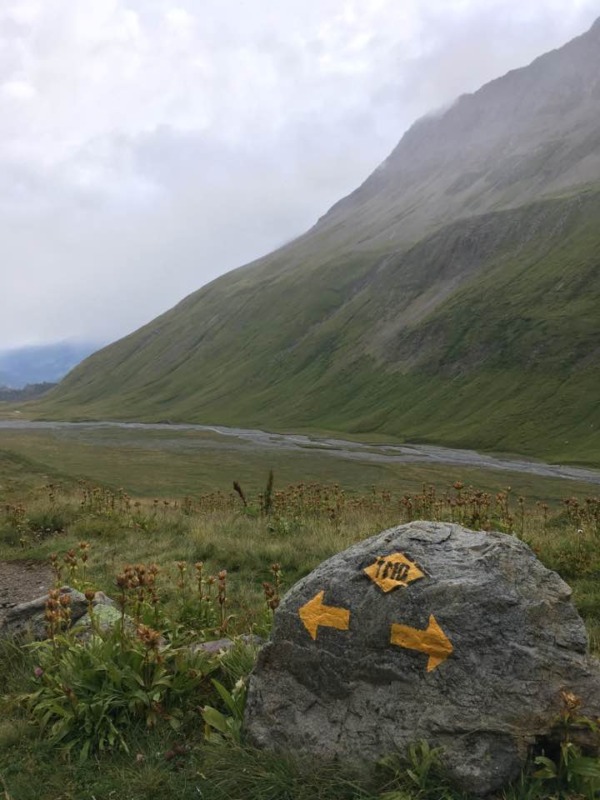
Follow the yellow diamonds labeled “TMB” for “Tour du Mont Blanc,” or the red-and-white blaze paint, as your route throughout the duration of the trek. Photo by Christa Rolls
Hiking the Tour du Mont Blanc: An Overview
The Tour du Mont Blanc was a shock to my system after hiking the wilderness trails of Washington State.
This is a hut-to-hut hike
Most people “hut-hike,” or hike from hut (or hotel) to hut. Tent camping is limited along most sections of the TMB, including in the Vallee de l’Arve, the Vallee des Galciers, and in the Swiss and Italian valleys along the route.
The TMB is very popular
The trail will be busy – and I mean BUSY, especially in summertime. If you’re looking for more solitude, you won’t find wilderness or alone-time here. However, the experiences with your fellow hikers and the sights you will see make this a once-in-a-lifetime experience.
Directionality matters
The most common direction of travel is counterclockwise. This affords hikers the best views of the surrounding valleys as you come over the handful of passes from the west. However, it is, of course, possible to hike clockwise and go against the flow of traffic.
Chamonix is the popular starting point
Most people use Chamonix as their home base. It is a resort and mountain-side town famous for its association with the Mont Blanc.
The tramway that takes visitors halfway up the mountain to the Nid D’Aigle for the Mont Blanc views is popular among day visitors. The Tour du Mont Blanc trail itself, however, officially starts in Les Houches, a quick bus ride outside of Chamonix.
Weather can change quickly in the mountains
If the weather looks bad, DON’T opt for the high routes along the trail, such as through the Col de Tricot to Refuge de Miage.
Of course, if you choose to stay at this refuge and others along high routes, this will prove more difficult to avoid. The route is very exposed and can be dangerous in inclement weather.
On the first day, we ended up taking the low route through Bionnassay because thunder and lightning shrouded the mountains the entire day of our hike. Don’t worry, you’ll still have a beautiful hike on the low routes!
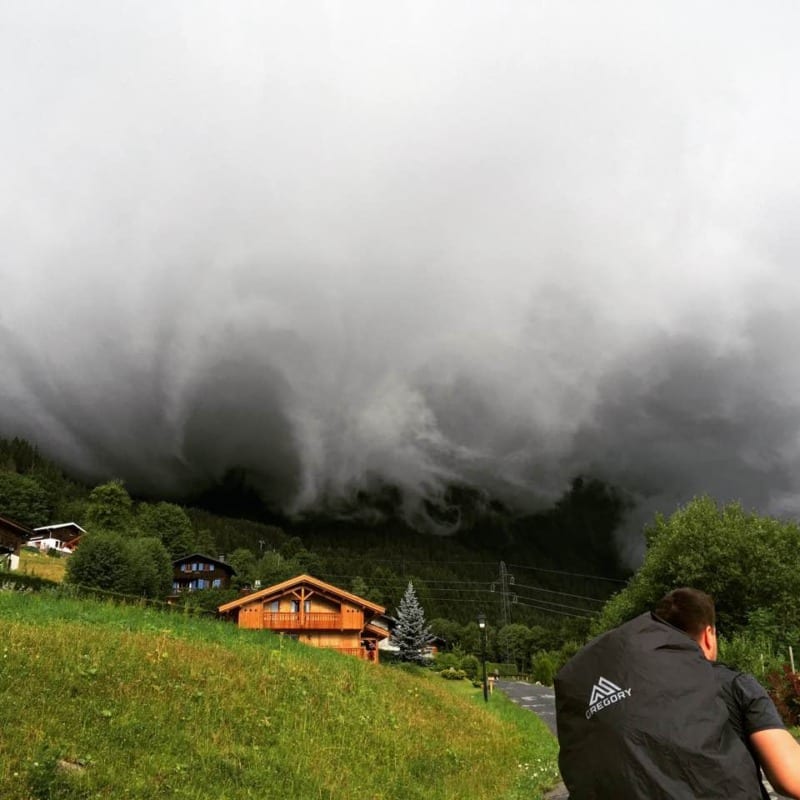
Dark thunderclouds shroud the mountains over Les Houches on day one of our trek. Photo by Christa Rolls
When to Go/Best Season to Hike the TMB
Late June to Late September is the typical time frame for hiking the TMB. This is entirely dependent on snow leftover from the previous season and winter weather that comes into the mountains in the autumn.
The high season is July and August, largely because of the more reliable weather and because this is the prime vacation period for most European countries.
The weather is very unpredictable in the mountains and can change extremely quickly. Keep this in mind as you plan your trip.
The Refuges, gites, and hotels will begin to open in June and will remain stocked and open in September. If snowy weather comes in early, it is possible for accommodations to close their doors early. A lot of these places require mules or helicopters to re-stock, or driving along winding mountain roads, hence why they might close earlier in inclement weather.
Avoid Ultra-Trail Season, if possible
The end of August is the ultra-marathon race around the TMB (the Ultra-Trail du Mont Blanc).
I recommend avoiding traveling during this time (unless you plan to do the Ultra, of course!). Otherwise, book your accommodation ahead of time, yield to runners, and prepare for things to be busy.
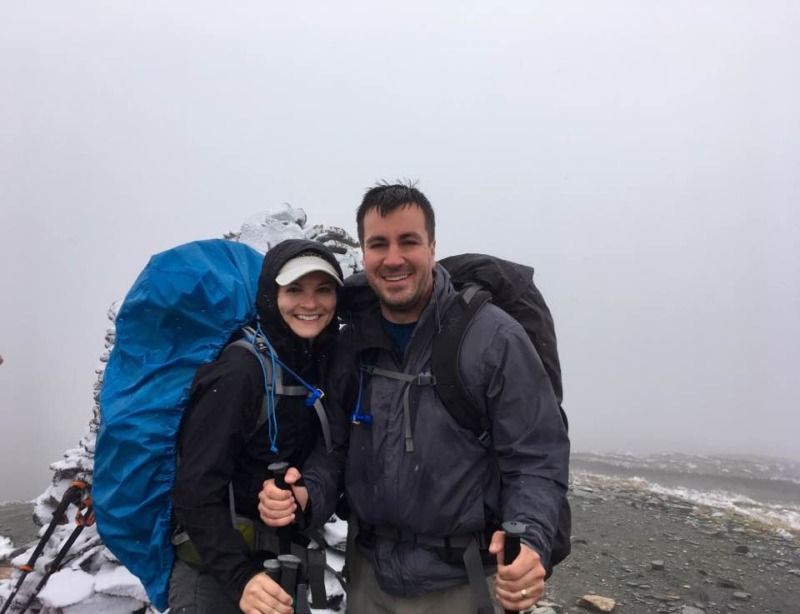
Even at the beginning of August, we experienced snow and cold, windy weather on the Col de la Seigne high pass. Photo by Christa Rolls
Cost of hiking the Tour du Mont Blanc
Plan for around 1000 Euro for the whole trek, including half-board accommodation (which includes a bed, breakfast, and dinner) and lunch options and snacks.
Upscale accommodation and luggage transfers cost more
You’ll pay about 500 Euro extra for more upscale accommodations, or private rooms, and luggage transfers.
Yes, LUGGAGE TRANSFERS. It might cost quite a bit extra to get, but you’ll save a TON on weight carried. Remember all those mountains I said you would have to climb up and down?
Luggage transfers are possible only to other towns that have a connecting road, so there may be a night that you wouldn’t have your bag with you. In this case, you’ll want a decent sized day pack (around 30L or so) to hold your lunches/snacks, water, toiletries, and an extra change of clothes along with your layers and sheet liner.
There are a number of options for luggage transfers along the trail – Mont Blanc Treks, Taxi Mont Blanc, and AlpenWild are just a few of the options.
Added costs at refuges
Contact your on-trail accommodations to see whether you are required to bring your own linens and towel. Some will provide these to you at extra cost, and others you must provide for yourself.
In the event that you need to provide them for yourself, purchase a travel sheet liner and a lightweight, packable travel towel.
We didn’t experience issues with bed bugs, but note that the blankets provided in refuges and gites aren’t washed between uses. This is why you would need the cover sheet.
Money on the trail
You will switch from Euro to Swiss Francs (CHF) along the trail. Swiss accommodations will usually accept Euro, but if you change out for CHF ahead of time you’ll be guaranteed a better rate.
When you contact the refuges for your reservation, ask them ahead of time if they accept credit card. Many locations outside of main cities do not accept them. People have also noted that the Swiss territory, in comparison to the French and Italian sides, are comparatively more expensive.
Banks and ATMs can be found in Chamonix, Les Houches, Les Contamines, Courmayeur, and La Fouly.
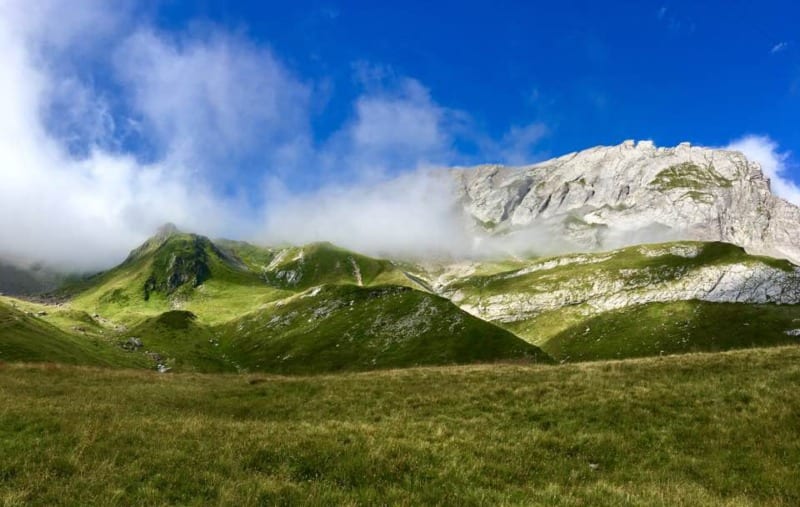
The mountains and surrounding scenery is stunning at every turn along the Tour du Mont Blanc. This is the view walking up the Bon Nant Torr. Photo by Christa Rolls
Getting to Chamonix
Again, Chamonix is the primary location where people stay to prepare for the Tour du Mont Blanc trek. The trailhead, however, starts in Les Houches, so select which town you prefer. Chamonix is busier, but also has more shopping and other sights.
Take a Bus
We flew into Geneva (the closest, large airport) and took a FlixBus to Chamonix. FlixBus actually ended up being an easy and inexpensive way to get to the trail, for around 30 Euro round trip. OUIbus, SwissTours, and EuroLines buses will also make the trip from Geneva to Chamonix-Mont Blanc. The main bus station drops you off in the middle of Chamonix, about two blocks from the centralized, pedestrian walk of the town.
Use a Rideshare
If the timing lines up with your flight arrival, you can also look into using BlaBlaCar, a ride-share app where locals will charge a reasonable fare for a spot in their car to a pre-specified end-destination. BlaBlaCar is a good option if you arrive at an odd time in the day, especially later, when the bus tickets are substantially more expensive.
Take the Train
The regional TER and TGV trains connect from main cities to Saint Gervaid-le Fayet. From here, you can hop on a local SNCF train, specifically the Mont Blanc Express, that goes to multiple villages in the area, including Saint Gervais-le Fayet to Martigny, Les Houches, Chamonix, Argentiere, and Vallorcine. Keep in mind, however, that trains have the potential to be affected by any government shut-downs, as well as funding and personnel staffing issues.
Want more epic hiking destinations? Check out our post on other long distance hikes, such as the GR 20!
Staying near and Getting to the TMB Trailhead
Staying in Chamonix
Our favorite place to stay in Chamonix-Mont-Blanc is the Chalet Hotel le Prieure – Chamonix.
If you book ahead of time, you can get insanely good deals on their recently updated rooms. Inquire about getting a mountain view room, for STUNNING views of the mountains at sunset!!
The rooms are spacious, clean, comfortable, and have a balcony. The location is such that you won’t be right in the middle of the loud pedestrian walk.
They also offer luggage storage for a reasonable cost of 5 Euro per day if you want to leave one of your big pieces behind during your trek. This is what we did, as Nathan brought his camera gear for the second leg of our trip to Spain, but he didn’t want to hike with all of it.
The Carte d’Hote, or Guest Card
Your accommodation in Chamonix should provide you with a Carte d’Hote, or Guest Card, upon your arrival.
With this, you’ll have access to free services, including the buses that transport visitors around the Chamonix Valley (including to Les Houches!) and train travel between Servoz and Vallorcine.
You really won’t need this if you are just in town to hike the TMB. However, there are discounts to the Alpine and Mountain Museums, car parks in the Saint-Michel and Mont-Blanc region, and the Richard Bozon Sports Center.
If you are using an Airbnb or staying in another kind of private accommodation, you will have to visit the Town Hall or Tourist Office to acquire this card for 10 Euro per person for a weekly stay. Again, this isn’t worth it unless you plan to extend your stay in the Chamonix area to visit some of the other sites and museums. This is why staying in one of the hotels in Chamonix can be worth the cost!
Getting to the trailhead
The official trail of the Tour du Mont Blanc begins in Les Houches, at the Telepherique de Bellevue. Hike up the forest trails from town, or take the tram up. The hike starts heading uphill right away – It’s a long and arduous hike nearly every day, so prepare yourself.
It is up to you whether you would like to hike to Les Houches from Chamonix or start in Les Houches to end your trek in 12 days in the Chamonix-Les Houches region. Some people will opt to go straight to Les Houches to spend the night.
We took the free bus (with our Carte d’Hote) from Chamonix to Les Houches to get us started.
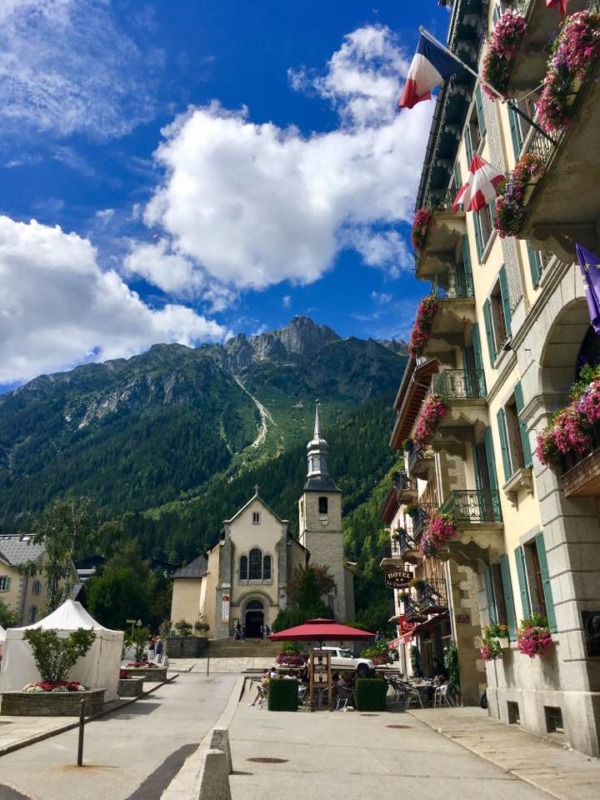
Chamonix is a beautiful and fun town to explore before or after your trek. Photo by Christa Rolls
Where to stay on the Trail
Planning out your accommodations for the trail is quite time-consuming, and likely why many people end up pre-purchasing a guided or self-guided tour.
In planning out our days, I mostly stuck to what the Cicerone guide recommended for us.
The challenge is ultimately contacting each refuge/hotel and keeping track of the following:
Deciding Which Refuge to Stay in
Consider the total distance you will need to travel between your starting and ending locations, and whether that distance is feasible for you.
A variety of room types may be available at various locations on the trail. Private rooms with shared or private bathrooms to ten person shared bunk rooms can be booked. If you have a preference, ask about availability during your correspondence.
Contact Each Refuge
To contact the refuges/hotels, some will have online forms available on the TMB website. Others may only respond via email or phone line.
If your French is minimal, emailing is a good option, as you both can use Google Translate if needed.
I contacted all refuges/hotels by email and created a separate “Tour du Mont Blanc” folder in my Gmail account to keep track of TMB-specific correspondence with refuge/hotel personnel.
How Much Money is Needed per Refuge
Determine whether the refuge/hotel accepts credit card or cash only. In addition, keep track of those you pay for ahead of time and those who want you to pay on arrival.
I kept an excel spreadsheet with the locations I still needed to pay cash for on the trail. This way, I made sure to take out the appropriate amount prior to starting our trek.
What you Need to Stay at Each Refuge
Certain refuges provide linens and towels and some don’t. Ask during your correspondence whether this is something you will have to bring along with you.
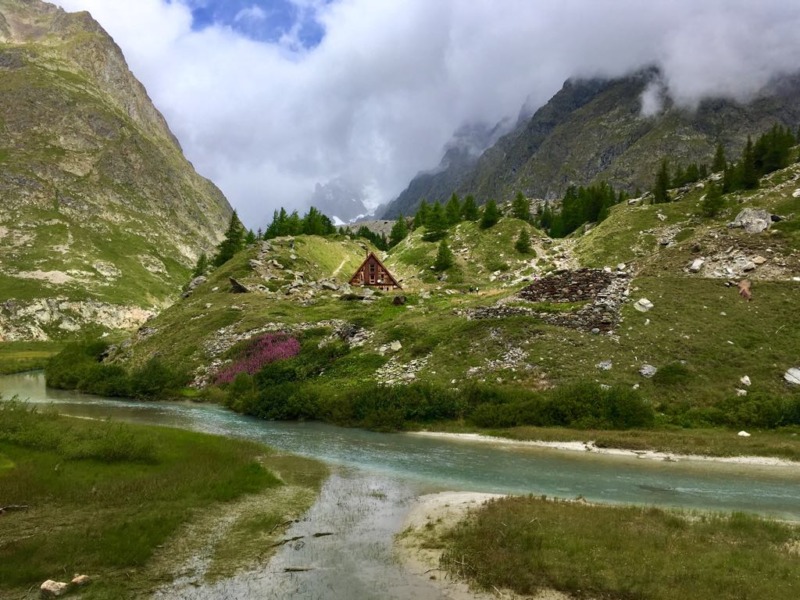
The Caban du Combal sits along the Val Veni next to Lac Combal, a stunning, clear blue, glacial lake. This was one of our favorite places to stay during our entire trek. Photo by Christa Rolls
The main reason why you would want to book accommodation ahead of time is to secure yourself a bed without the worry of having to beat everyone else to the refuge.
Some people do this – get up first thing in the morning and hoof it as quickly as possible to their next refuge site.
As I mentioned before, I’m a pretty slow hiker and would always tend to arrive at my destination by mid-afternoon even after getting up earlier in the day. It was for my peace of mind that we had spots secured. Even though it took time to coordinate, it was worth it.
If you don’t book anything, you have the freedom to continue on or stop short on your hike whenever you would like. Otherwise, you risk losing a deposit to the places you’ve booked ahead of time.
Check out the embedded map found at the top of this post for the primary recommended huts, hotels, and refuges along the Tour du Mont Blanc.
Food on the TMB
You won’t ever run out of food availability on the trail (unless you go in the off-season and huts are closed until the following summer). There are so many places that offer snacks and full meals along the way in summer.
Of course, some breakfasts and dinners are better than others along the way. Our most favorite dinner was at Les Chambres du Soleil in Les Chapieux. Even if you don’t end up staying the night here, consider taking them up on their fabulous dinner and dessert.
Breakfast typically comprises of a hot beverage, bread with butter and confiture (jam), and sometimes some yogurt, cheeses, and meats.
There largely aren’t kitchens that are open to visitors in these locations, so if you’re attempting to save money by just renting a bed and cooking your own food, keep in mind that you’ll need to bring your own equipment.
The dining areas of refuges at dinnertime will be for those dining in ONLY, so if you’re making your own food you’ll need to do that elsewhere. Some places are pickier about this than others. Dinner always consists of salad or soup, a main course, and a desert.
Water on the TMB
Because of all the grazing land around the trail, DO NOT drink the water in streams without filtering it first. Cow, horse, and sheep feces can be found all along the trails and streams on the Tour du Mont Blanc. Consuming tainted water can give you a nasty stomach bug.
You will frequently come across accommodations where there will be potable water to fill up your bottles or Camelback. Given this, you really only need to fill up for the day when you embark each morning.
If you’re planning any side excursions, however, and tend to drink a ton of water during your hikes (like me), it might be worth it to bring along a Sawyer Mini or Lifestraw, or water purification tablets. I always hike with a 3L Camelback on longer day hikes. Despite the added weight (every 16 oz. of water is about a pound of weight), this is worth it to me since I hydrate so much.
Some streams along the trail may stop flowing in late summer, but you really won’t have an issue with filling up along the way.
TIP: Consider doing some longer day hikes prior to your trip to gauge your water intake.
All potable water locations will be clearly marked as such with “Eau Potable.” Avoid water sources that say “Eau Non Potable,” as the “non” (meaning “no“) indicates it should not be consumed.
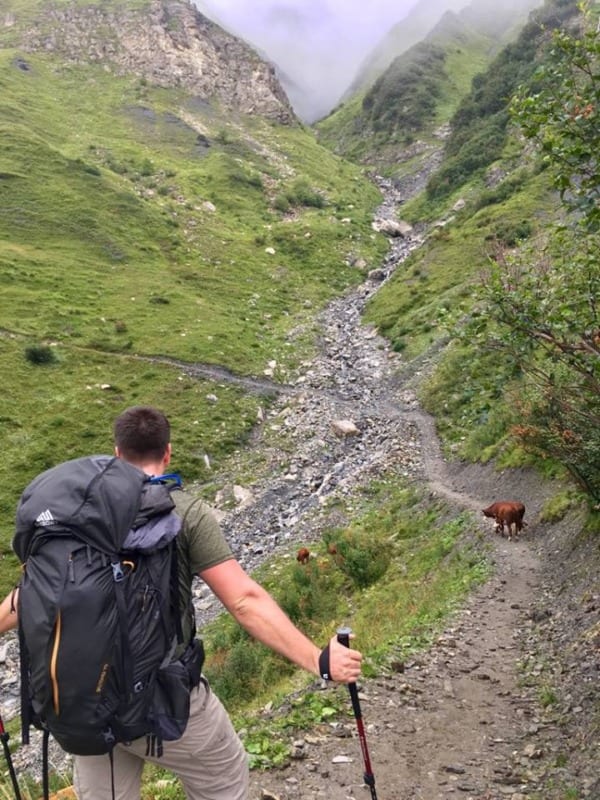
Livestock of all kinds can be found literally on the trail along the Tour du Mont Blanc. Exercise caution when passing animals with young. Photo by Christa Rolls
Miscellaneous Tips for Hiking the Tour du Mont Blanc
Be mindful about where you end up hiking
And follow the TMB trail blazes (a yellow diamond or red-and-white blaze).
The extensive number of hikers and subsequent erosion has created some meandering trails that lead off of the main trail. Most eventually lead back to the main trail, but some don’t. These have the potential to create other unwanted trails from people hiking all over.
Learn some French
I know, I know, learning languages is hard. But learning a few phrases will make speaking to some of the locals a lot easier.
Many people will be speaking English on the trail, as people from countries all over the world will be hiking the trail. However, refuge personnel may speak less English.
Although you’ll pass through Italy, French is still widely understood in this bordering region next to France. In addition, the region you will be hiking through in Switzerland is the French-speaking side of the country.
At the very least, learn to say the basic phrases, such as: hello (bonjour or bonsoir), please (s’il vous plait), and thank you (merci).
Get good hiking poles
The consistent elevation gain and loss can be especially hard on your knees and legs. Hiking poles will alleviate the pain somewhat. These are my favorite.
Get good hiking shoes
You’ll be walking in your shoes A LOT over a two-week time frame. While good hiking shoes or boots can be expensive, it’s worth it to get a pair that fit your feet well and are comfortable.
I swear by my Vasques, and I never have to break them in.
Take time to explore some of the towns and villages along the way
You’ll come across some wonderful valleys and alpine prairies, as well as plenty of places to do a side hiking trip.
This is another reason I like to book my accommodation ahead of time. My mind is on exploring and taking my time along the trail instead of racing to the next hut!
Take time for a rest day
If you need it, there’s absolutely nothing wrong with giving your body a break.
This is a long trek, so listen to what your body needs and modify your hiking days accordingly.
For a halfway hike, Courmayeur is a good place to stop if you don’t have as much time to hike. Buses go through the mountain pass straight back to Chamonix, costing around 15 Euro per person.
By the time you get to Courmayeur, your body will likely be ready to keep on trekking!
Don’t take the hiking guide to heart 100% of the time
While guides are there to help you with some navigation, logistics, and accommodation information, everyone hikes differently.
The difficulty level and hiking times for each day may vary from person to person. I tend to hike an hour or two longer than the suggested hiking times, while some people I know hike about two hours faster than the suggested hiking times.
Be kind to yourself and recognize you can hike your own hike!
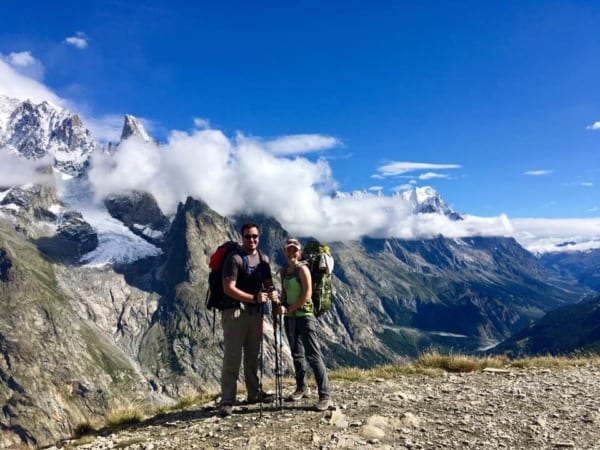
The sun is a welcome friend after getting snowed on in the high mountains! Note that layers are incredibly important for this trek, as the weather can change very quickly. Photo by Christa Rolls
Gear Recommendations for the Tour du Mont Blanc
My pack weighed about 10 kg without water – your pack should only be about 20% of your body weight. The full list of the gear I brought is as follows.
Backpacking Gear
- Deuter Lite 60+10 SL Hiking Pack with Rain Cover (her)
- Gregory Baltoro 85L Pack (him)
- Small, lightweight, collapsible day pack (for day hikes)
- Black Diamond hiking poles
- Petzel Headlamp
Kitchen
- Collapsible cup/mug
- Titanium spork other eating utensil
Food and Water
- Camelback 3 L bladder
- Lunch and/or snacks for day-time hiking on the trail
Clothing and Footwear
- Vasque hiking boots
- Three pair hiking socks (SmartWool and Darn Tough)
- Reef flip flops (or other house shoes)
- Three pair Patagonia hiking underwear (originally purchased on discount at REI)
- Two hiking bras (originally purchased on discount at REI)
- One pair Columbia convertible pants
- Two moisture-wicking long sleeved shirts
- Two moisture-wicking short sleeved shirts
- Patagonia fleece (given to me by a mountain hut manager after someone left it for a month)
- Smartwool long john pants (originally purchased on discount at REI)
- REI puffy jacket
- North Face rain jacket
- Columbia Rain Pants
- Buff neck warmer
- North Face glove liners
- Prana ear warmer
Emergency and First Aid
- First Aid kit: alcohol wipes, antibacterial ointment, antidiarrheal, antihistamines, ibuprofen, Dramamine, antacid, epipen, gauze, medical tape, small round of duct tape, safety pin
- Hiking whistle (check the chest buckle on your hiking pack – some have a whistle built in)
- Travel Insurance – we recommend this for every trip you take!
Health and Hygiene
- Toiletries: wet wipes, face wipes, toilet paper, hand sanitizer, nail clippers, contacts and glasses, sunscreen, mini toothbrush, toothpaste, concealer wand (for after trip), sunscreen lip balm, collapsible hair brush, care plus clean bio soap (biodegradable; for skin, hair, dishes, and clothes)
- Lightweight camping towel
- Sac a la viande/sleeping bag liner, or travel sheet liner
- Sunglasses and baseball hat
Navigation
- Cicerone guide to hiking the Tour du Mont Blanc – excellent guide for the surrounding area’s accommodations, food options, alternative routes, and natural features
- Waterproof trekking map of the Tour du Mont Blanc
- Compass
Tools and Repair items
Backpacking Extras
- Eye mask and earplugs (if you are a light sleeper, definitely don’t forget ear plugs if you’re sleeping in dorm style rooms)
- Phone charger and battery charger pack
- Dry bag and large trash bag to line the inside of our our packs (in addition to rain cover)
- Stuff sacks for organizing gear (e.g., one sack for kitchen, one for food, one for clothes, etc.)
Personal Items
- Cellphone
- Credit cards and ID/passport
There are a few other gear considerations to keep in mind for your trip
- We did not end up deviating from the regular route to alternative routes or climbs, so we didn’t end up using the detailed trail map. If you decide you want to go on some of the higher routes or add climbs to your trip, consider obtaining IGN 3531 ETR and IGN 3630 OTR waterproof maps to assist in your navigation.
- We monitored the online forums prior to our trek to ensure there was no snow left on the ground. By mid-to-late July most of the snow has begun melting away. If you anticipate there being snow on the trail, bring crampons or yak-traks along in the event that things get slick and icy.
- Accommodations will provide you at least with a pillow and wool blanket, but they may not wash them or put covers on them. This is what the travel sheet liner is for.
Tourist Office Locations and Information
For more information on activities in the surrounding area, contact the region’s corresponding tourist information office.
Chamonix Tourist Information Center
Address: 85 Place du Triangle de l’Amitié, 74400 Chamonix-Mont-Blanc, France
Phone: +33 4 50 53 00 24
Website: chamonix.com
Tourist Office Les Houches
Address: 9 Place de la Mairie, 74310 Les Houches, France
Phone: +33 4 50 55 50 62
Website: leshouches.com
Courmayeur Tourist Information Office
Address: CSC Centro Servizi, Viale Monte Bianco, 10, 11013 Courmayeur AO, Italy
Phone: +39 0165 842060
Website: lovevda.it
Champex-Lac Tourist Information Office
Address: Route du Lac 38, 1938 Orsières, Switzerland
Phone: +41 27 775 23 83
Website: champex.ch
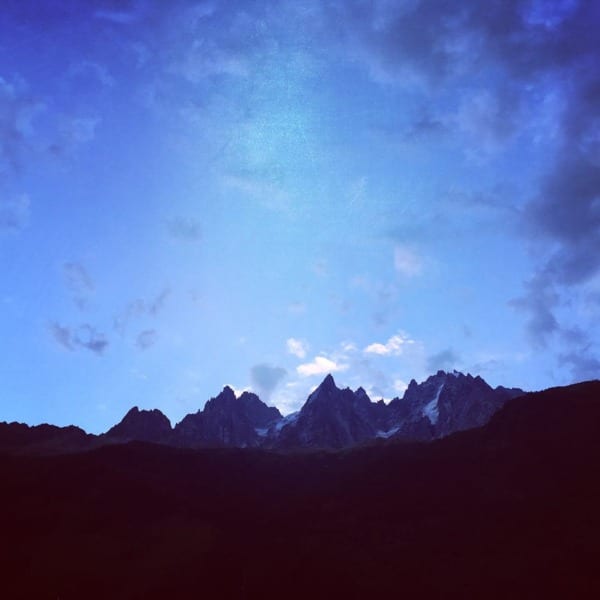
Get ready for an incredible display of stars at night if the sky remains clear. Photo by Christa Rolls
The Tour du Mont Blanc is one of the top treks in the world for good reason. It’s a stunning, fun, and unforgettable way to experience the Alps.
After your trip, consider visiting the Aiguille du Midi and Mer de Glace to see the Mont Blanc up close.
Tell us about your TMB experiences in the comments and feel free to message us with any questions or for more details!
Happy Hiking!
Christa and Nathan
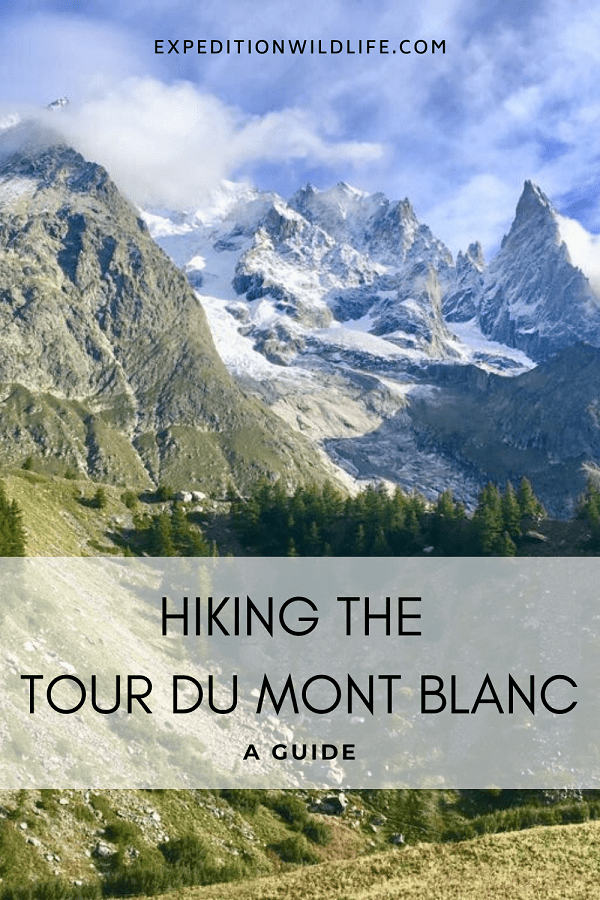

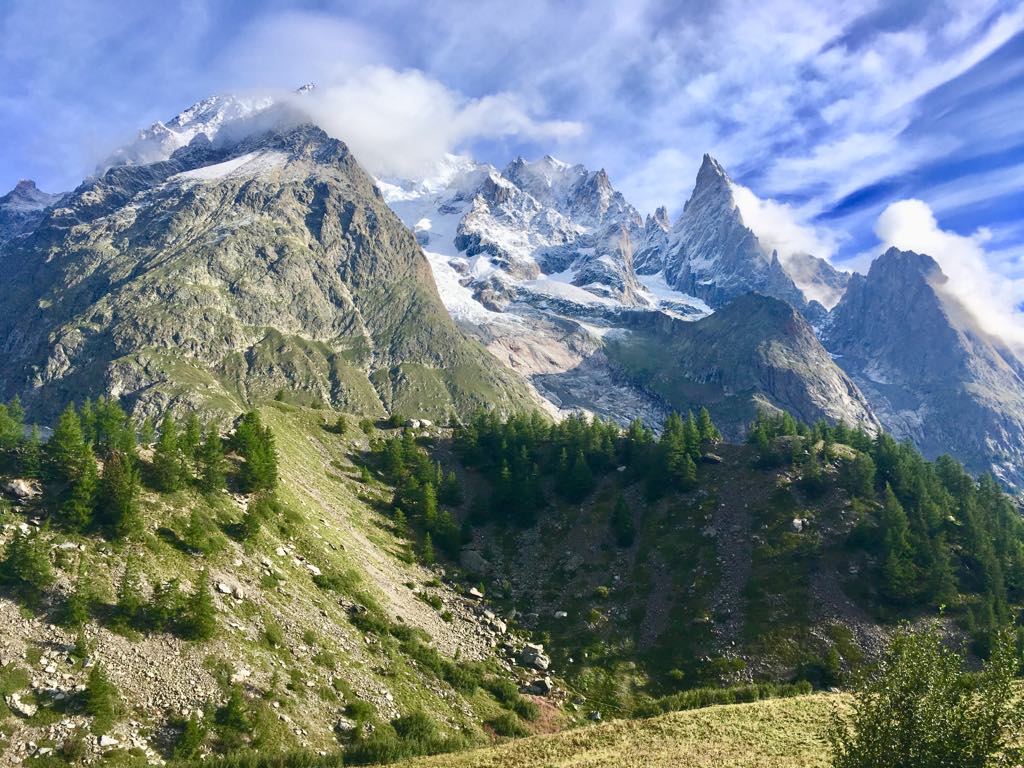
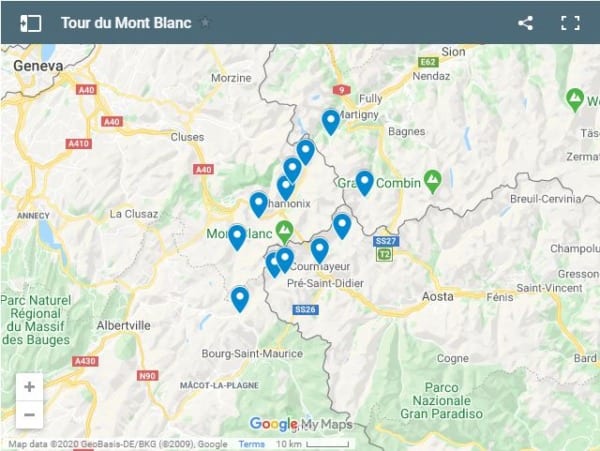
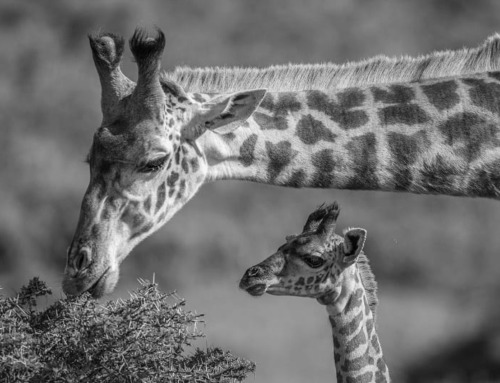
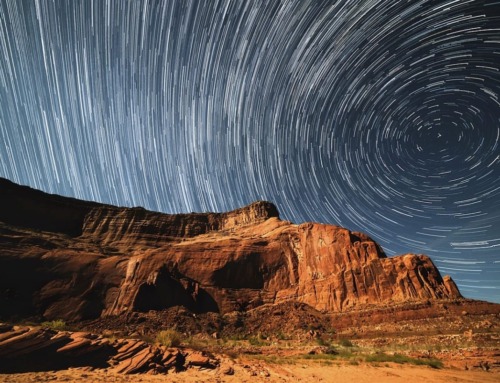
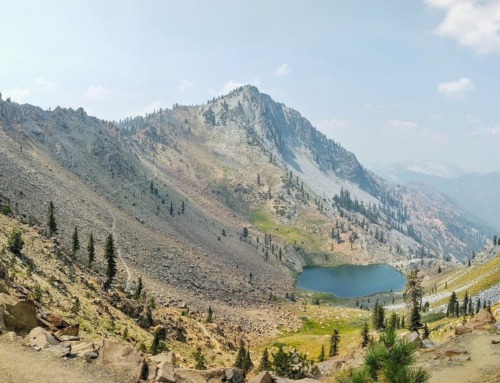
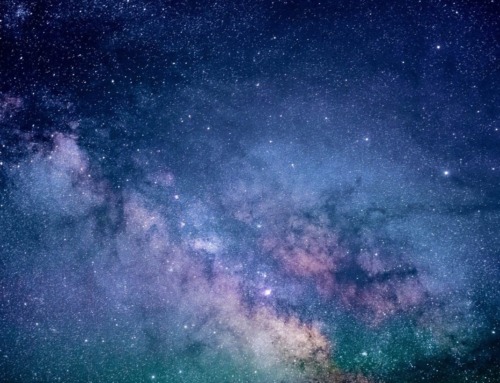
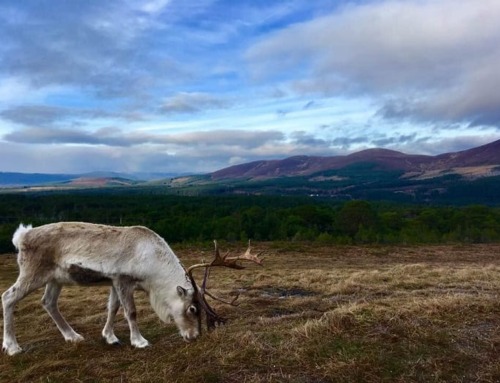
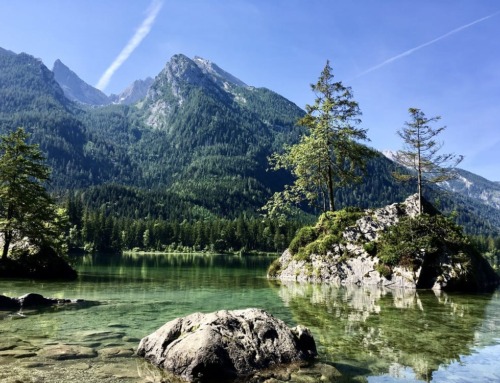
I’m off to hike the TMB at the start of August so I really appreciated your article. Whilst we are doing a 7 day itinerary there is some really useful information in here which i will be using for our trip, thanks for taking the time to write this piece.
Cheers and happy hiking!
Ceri, so glad some of the information was useful for you! Have a safe and wonderful trip, and please let me know how it went when you get back!